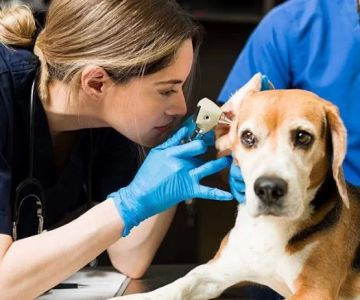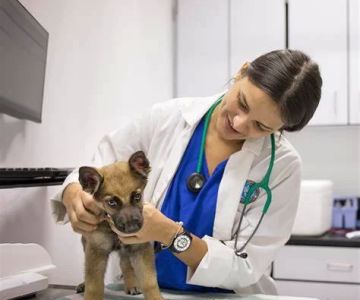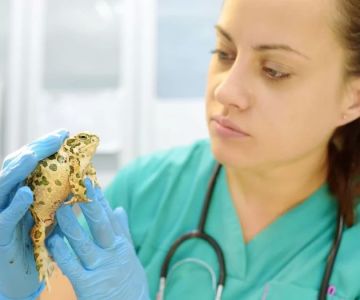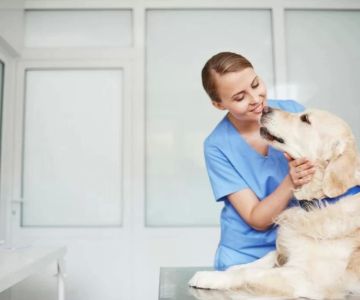- 1- Introduction to Veterinary Terms in Spanish
- 2- How to Say Veterinarian in Spanish
- 3- Alternative Ways to Refer to Veterinarians in Spanish
- 4- Useful Spanish Phrases for Veterinary Visits
- 5- Real-Life Examples of Veterinary Care in Spanish-Speaking Countries
- 6- Tips for Communicating with Spanish-Speaking Pet Owners
1. Introduction to Veterinary Terms in Spanish
As the world becomes more interconnected, it is increasingly important for veterinary professionals and pet owners alike to communicate across language barriers. For those who interact with Spanish-speaking pet owners or work in areas with diverse populations, understanding how to say key veterinary terms in Spanish can be incredibly useful.
When it comes to veterinary care, one of the most essential terms you’ll need to know is “veterinarian.” In Spanish-speaking countries, veterinarians provide essential services to animals, just as they do in English-speaking countries. Whether you're traveling abroad or working in a bilingual area, being able to communicate with Spanish-speaking pet owners about their animals’ health is a key skill.
This guide will walk you through how to say “veterinarian” in Spanish, as well as provide other useful veterinary terms and phrases that will help you communicate effectively during veterinary visits and consultations.
2. How to Say Veterinarian in Spanish
The direct translation of “veterinarian” in Spanish is “veterinario” for a male veterinarian and “veterinaria” for a female veterinarian. These terms are widely used across Spanish-speaking countries, and understanding the gender distinction can help you in more formal situations.
Here are some examples of how you can use these terms:
- “El veterinario” – The veterinarian (male)
- “La veterinaria” – The veterinarian (female)
- “Voy al veterinario” – I’m going to the veterinarian
- “Mi perro necesita un veterinario” – My dog needs a veterinarian
It's important to note that while "veterinario" is the most common term, in some regions, people may refer to the profession in a more informal manner. Understanding these nuances will help you communicate more effectively with Spanish-speaking clients.
3. Alternative Ways to Refer to Veterinarians in Spanish
In addition to "veterinario" and "veterinaria," there are other ways to refer to a veterinarian or the veterinary profession, depending on the context or region. Some variations include:
- “Doctor de animales” – Animal doctor. This is a more descriptive way of referring to a veterinarian and may be used in informal contexts.
- “Médico veterinario” – Veterinary doctor. This term is often used in formal contexts and is equivalent to “Doctor of Veterinary Medicine” (DVM) in English.
- “Clínica veterinaria” – Veterinary clinic. If you need to refer to the place where veterinary services are provided, you can use this term.
These alternative terms can come in handy, especially in regions where specific dialects or local variations are used in everyday language.
4. Useful Spanish Phrases for Veterinary Visits
When visiting a veterinarian, there are several common phrases you may need to use in Spanish to ensure clear communication. Below are some useful phrases to know for a veterinary visit:
- “¿Cuál es el problema de mi mascota?” – What is the problem with my pet?
- “¿Está enfermo mi perro?” – Is my dog sick?
- “Mi gato no come bien.” – My cat isn’t eating well.
- “¿Cuánto cuesta la consulta?” – How much does the consultation cost?
- “¿Es necesario hacer un examen?” – Is it necessary to do an exam?
- “¿Qué tratamiento recomienda?” – What treatment do you recommend?
Learning these phrases will help you navigate basic veterinary visits in Spanish-speaking environments and ensure your pets get the care they need.
5. Real-Life Examples of Veterinary Care in Spanish-Speaking Countries
Veterinary care in Spanish-speaking countries is similar to that in the United States or other English-speaking countries, but there may be differences in the terminology, availability of services, and regional practices. For example, in Mexico, veterinarians often work in “consultorios veterinarios,” or small veterinary offices, while in Spain, they may practice in “clínicas veterinarias” (veterinary clinics) that offer a wider range of services.
In countries like Argentina and Colombia, pet ownership is highly valued, and many veterinary professionals offer specialized care such as acupuncture or holistic treatments. Understanding the terminology specific to each region can help you communicate more effectively with local veterinarians and pet owners during visits.
6. Tips for Communicating with Spanish-Speaking Pet Owners
If you are a veterinarian or pet care professional working with Spanish-speaking clients, here are a few tips to improve communication and ensure the best care for the pets:
- Learn Basic Veterinary Spanish: Learning common veterinary terms in Spanish can make a significant difference in building trust with Spanish-speaking pet owners. Even basic knowledge can improve communication and make clients feel more comfortable.
- Use Clear and Simple Language: When discussing a pet’s condition or treatment, use simple, clear language to ensure that the pet owner understands the instructions or recommendations. Avoid overly technical terms unless necessary.
- Be Patient and Compassionate: Many Spanish-speaking pet owners may not be familiar with medical terms in English. Take the time to explain things thoroughly and show empathy toward the pet’s condition.
- Provide Written Instructions in Spanish: Whenever possible, provide written instructions or information about treatments in Spanish. This ensures that the pet owner can refer to the information at home.
By following these tips, you can improve the experience for both Spanish-speaking pet owners and their animals, ensuring they receive the best care possible.











